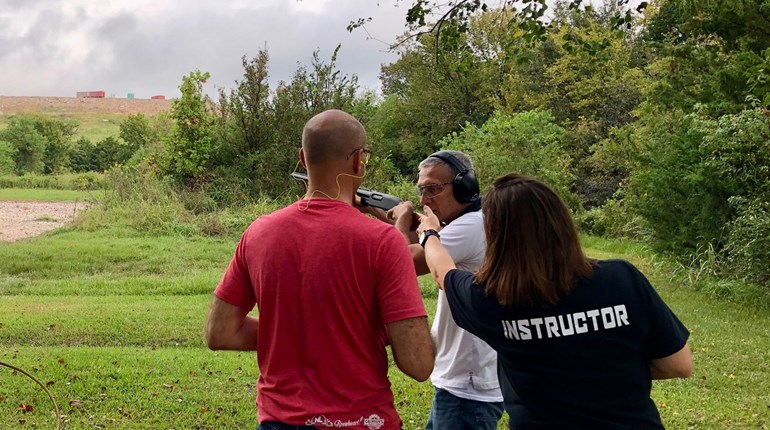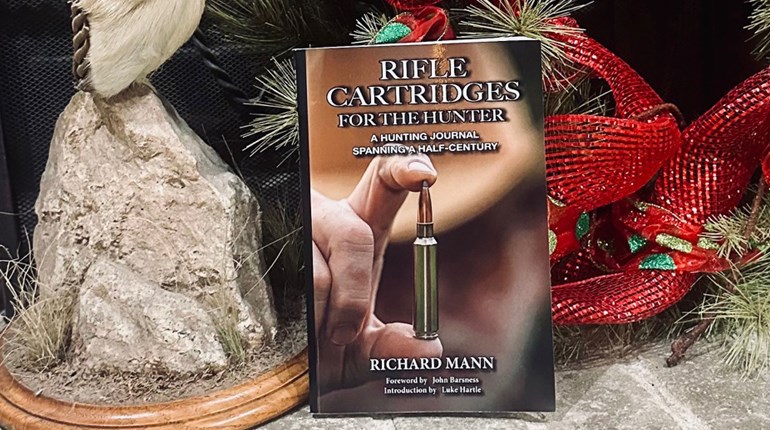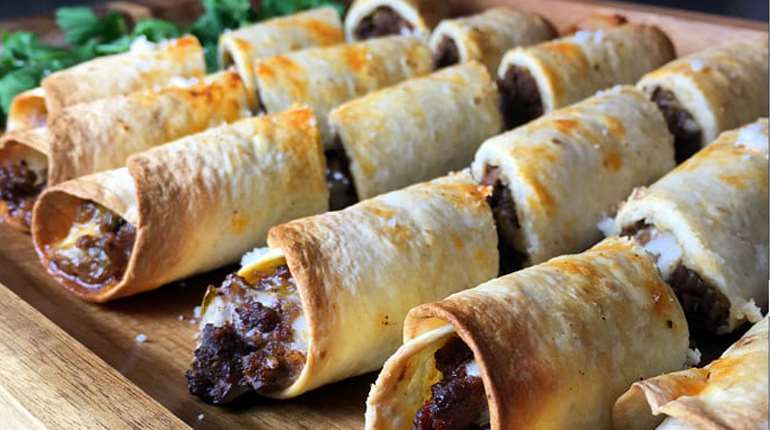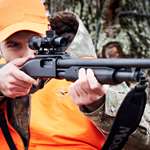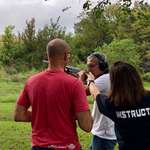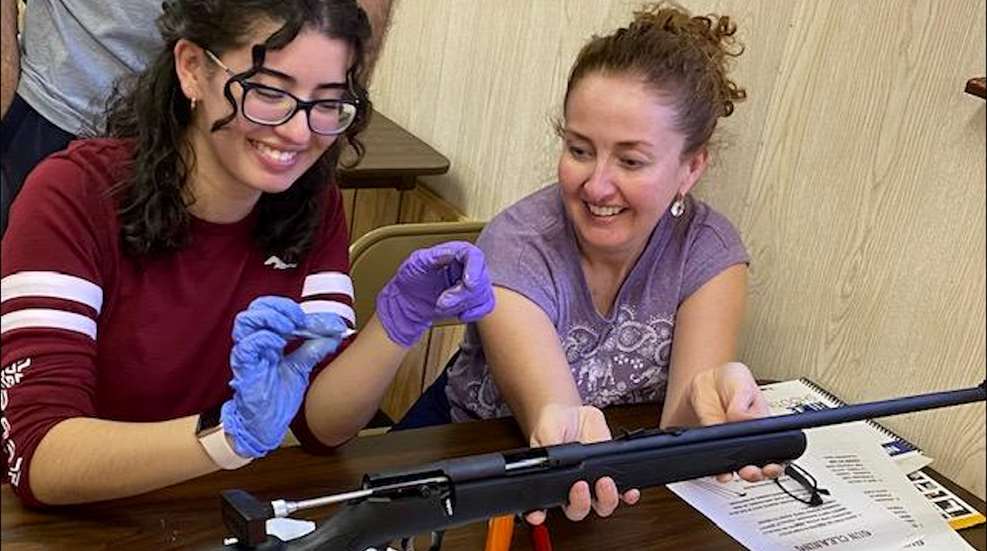
Teaching a firearms course is no different than teaching any other topic. You can have all the knowledge in the world, but if you cannot deliver the information in an effective manner, your students will suffer. A great instructor can identify their students’ needs and knows the techniques that will help their students achieve their goals.
Some of the techniques an instructor can use to conduct an effective firearms training course are: maintaining a small class size, keeping the students involved, starting off with simple guns in smaller calibers, minimizing distractions at the range, offering a variety of targets and properly concluding the class.
Small Class Size
I have instructed hundreds of new gun owners in the NRA Basic Rifle, Pistol and Shotgun courses. I have heard many complaints from numerous individuals who had taken a firearms course from other instructors or schools. Their top complaints were either they did not feel they got personalized attention from the instructor or that they felt rushed when they were at the range. Both issues can be attributed to class size.
A new gun owner’s first impression of a firearms training course occurs when they walk through the front door. The size of your class can either intimidate students or put them at ease. New gun owners are often uneasy in the first place, perhaps because of the way firearms are portrayed in the media. The only way to minimize this hesitancy among many students is to give them personalized attention.
Involve Your Students
Involving your students is a must when conducting a firearms training course. It is a requirement if you are teaching an NRA firearms training course. If you are not involving your students, you are not teaching. You are lecturing. In fact, the NRA requires that all instructors must follow the concept of Total Participant Involvement, also known as TPI.
As the instructor, TPI starts with you. It is more than just having students take turns reading Power Point slides or a few sentences out of the NRA student books. Remember, you are instructing students, not asking them. This means you should instruct your students to be involved, not ask them to be involved. For example, do not ask if someone wants to demonstrate the proper grip on a pistol, assign one of your students to demonstrate a proper grip. Of course, guide them along the way and assist if they have questions. Every student in your class should help you teach or demonstrate some part of each lesson. By involving students, they will understand and retain the information.
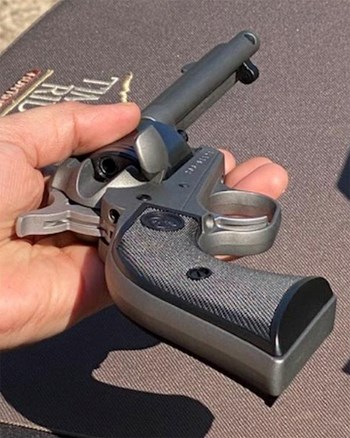 Start Small
Start Small
When I first started conducting firearms training courses, I either supplied a variety of different makes, models and calibers or allowed individuals to bring their own firearms for the range portion of my course. Some of the new shooters were having trouble concentrating on the proper shooting techniques while trying to manage the recoil of their firearms. There were two recurring results: I was not happy with the marksmanship of my students, and many students were frustrated or disappointed in their range performance.
Taking a page out of the NRA Instructor Courses, I decided to start small. This means using small calibers and simple-to-operate firearms. I started using single-action .22-cal. revolvers for my pistol class. The students found it was much easier to master the fundamentals (aiming, breathing, hold control, trigger control and follow-through) using this type of handgun. Another benefit of using the .22 single-action revolvers is slowing down the shooter, so they can see and understand each of the fundamentals as they work through them with every shot.
Once the student sees he or she can properly and successfully shoot a single-action revolver, they know they can shoot something larger, with the right amount of practice. Once I open it up to any student who brought their own firearm and ammo to shoot,—it never fails—students are amazed by how much better they shoot their larger caliber handguns, after first training with the smaller caliber revolvers!
There is an additional benefit of starting small. I found that when teaching with larger calibers, the students waiting their turn to shoot would stand much further back. When I began using the smaller calibers, the students waiting their turn were standing close behind the students who were shooting. The on-deck shooters were now involved and benefitting from hearing the instructions given to the shooter, and the great questions being asked. This was doubling the teaching time that each student was receiving.
Minimize Range Distractions
Minimizing the distractions at the range is one of the hardest to account for variables. This takes additional work and planning on the instructor’s part. When I first started teaching firearms classes, the range portion was conducted at a local public. Due to the timing of my schedule, we always ended up at the range during peak business hours. The range was very accommodating and tried to put us on the last shooting bays to give us some room for teaching and rotating students through the shooting portion. Unfortunately, they could only accommodate us so much. It never failed. We would always end up with an individual in the adjacent shooting bay with an AR-platform pistol or short rifle complete with a muzzle brake. which can be loud and distracting if you are trying to carry on a conversation or teach a new shooter. It can even cause them to want to halt the lesson.
If a public range is where you teach, try to work with the owner of the range to get as much distance between your class and other customers as possible. There might even be a private range you can reserve. Also plan your range time when there are less people on the range. You may even be able to make arrangements to come to the range before opening or stay after close. Remember, if your students cannot concentrate or even hear what you are saying, learning is impossible!
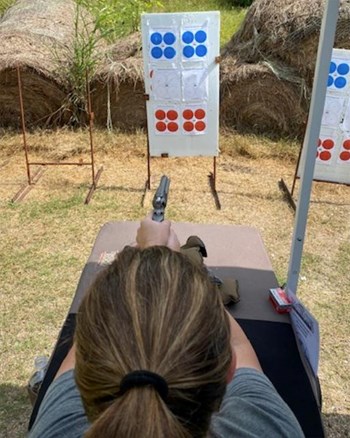 Offer Target Options
Offer Target Options
Consider putting up targets that have no scoring rings, numerical values or a bullseye. A new shooter can have a tight grouping outside the bullseye and one thrown shot that hits the “X” and the only thing the shooter is proud of is the one shot in the middle. When you explain that a tight grouping of multiple shots is better than one in the middle, they still focus on their one shot that pierced the “X.” Getting a new shooter to move a tight grouping of multiple shots to the middle is easier than fixing shots all over the place.
I often place a blank sheet of paper with a dot in the center, giving them something to focus on, as the target. This way I don’t have to tell them to ignore the scoring numbers. By using a blank sheet of paper, a new shooter can understand the importance of a tight grouping over a high score. I also change it up using different sheets of colored paper.
I discovered this technique by accident. Surprisingly, it helps many students with their shooting skills. I put up a white target, blue target and a red target. I allow the students to shoot any target they want. I found that some students see different color targets better than others. Outside of the shooting fundamentals, this is one of the biggest factors in helping a new shooter on the range be successful.
Conclusion of the Class
Many times, properly concluding a firearms training course is the most overlooked part of the class. Usually, everyone, including the instructor, is happy with their progress and tired after a full day of training. This is not the time for the instructor to deflate, but to keep up his or her stamina to finish strong and keep the students engaged.
There are two things that an instructor needs to do before releasing the students. The first is to have the students evaluate themselves. It is very easy for an instructor to tell the students, “You all did great; just keep practicing at the range,” and then dismiss them. However, you need to ask the students how they feel they did and have them tell you what they think they need to work on. By doing this, you are keeping your students involved (TPI) while at the same time having them reflect on the lessons of the day.
The second thing is to give students the tools and information they need to continue their firearms training and education. Part of the NRA Instructor curriculum is to explain other NRA training courses available, both live fire and non-live fire. Provide information on regional clubs and organizations in their community to continue their learning and training.
The goal of every NRA Training Counselor and NRA Instructor should be to recruit and train more individuals. The more people interested in firearms through proper training and education, the stronger the NRA becomes, which in turn preserves our Second Amendment for future generations.












